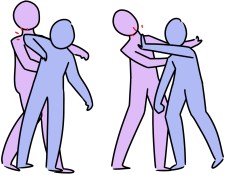With the recent expansion of the health requirement from one to six terms, Deerfield has the opportunity to evaluate what is added to the curriculum. As we head into these discussions, I would like to see a new aspect of health addressed: physical safety.
Singapore is a virtually crime-free country. Growing up, I had no qualms about calling a cab at midnight or going for a swim at the crack of dawn. This sense of safety has been further reinforced at Deerfield. OneCards are required to enter each dorm. Security officers roam academic buildings. And the few concerns there have been – remember the weird man who snuck onto campus to take pictures? – were addressed immediately by the administration.

On college tours over spring break, I was genuinely surprised by the number of tour guides who emphasized safety measures, whether it be the blue light system or a “safe ride” program. For me, the concept of safety had never been a big concern – admittedly due to the privileges I’ve enjoyed both in my hometown and at my current school. The idea that I could be physically harmed by another person seemed improbable.
New York changed that.
While walking back to my hotel after a late dinner, I rounded a corner and walked straight into a woman. We were standing in a relatively deserted area. She turned to glare at me, clearly inebriated.
“What do you think you’re doing, b***h?” she screamed. Shocked, I rambled an apology. The woman grabbed my elbow, hard enough to draw blood, and shoved me towards the wall. I stood there, somehow paralyzed, feeling the concrete against the skin of my back. She walked closer until she was barely a centimeter away, crouching to level her face with mine. I closed my eyes and tried not to breathe.
After a minute or so, the woman backed away and wandered off. I got home safely with barely a cut. I got lucky, so lucky. Nothing happened. But something could have. And I had absolutely no idea what to do in such a situation.
The incident served as a stark and overdue realization – one that we tend to forget on campus. Deerfield is not an accurate representation of the world outside of it. Take a look at the news: we are a society marred by demonstrations of violence. It is a universal problem, though race and gender make some more susceptible than others.
Even now, it is the feeling of powerlessness that resonates with me most deeply. I would do anything to decrease the chances of ever feeling that way again. I am thus calling for self-defense to be integrated into our health curriculum.
Lessons don’t have to be extensive or frequent. Students can use a 70-minute period of Health to learn the basics: how to escape a choke hold, how to target weak spots, and how to fight an armed opponent. They can be held once every month or two. This process becomes even easier given the increase of the health requirement from one term to six.
The curriculum as it stands now addresses body disorders, drug abuse, mental illness, and more. It aims for empowerment through knowledge. We are taught how the body reacts to addiction, how to maintain physical fitness, and how to engage in meaningful relationships. The broad scope of topics is a nod to the fact that adolescents face a myriad challenges. Given our standard of such extensive education, how can we not teach students what to do when their immediate, physical safety is threatened?
I believe that self-defense is a skill all Deerfield students should have. I urge the administration to consider the same.